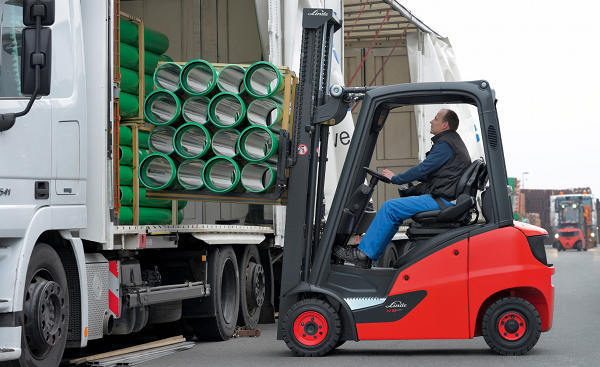Why Trained Drivers Keep Loads Safe on the Roads

Loads that are not properly secured cause tens of thousands of road incidents each year in the UK. So how can LGV drivers better tackle the issue of load safety?
Loading and unloading a vehicle is such a routine part of an LGV driver’s job that sometimes its impact on safety can be overlooked and it’s easy for drivers to get complacent which means some actions or checks get overlooked, or are performed incorrectly. This can create a completely avoidable risk.
Even managers who want to adopt best practice with good quality, relevant, and regularly updated training, knowing it is vital for Heavy Goods drivers, can take their eye of the ball when considering whether load safety is being adequately covered.
Following training, a qualified driver understands the basic principles of load safety: load shift and how it can be countered; they understand the effect of forces on the moving vehicle and its load; and the consequences of not securing loads properly.
To help reduce incidents, all aspects of load safety, at every single stage of the process, from the picker handling the consignment, to the lift truck driver moving the forks onto the pallet, and to the loading assistant directing the placement of the loads, needs to be considered.
By implementing the right training, drivers of large vehicles can learn to take all of this into account and consider the load is, how it is stored, and how it is put on the vehicle, and how it is distributed and secured once placed on the vehicle.
Planning is also an important part of the process and drivers can learn the importance of planning for each consignment when training. Planning includes thinking about the working environment, the weather conditions, the vehicle and its access and exit, lifting equipment and working at height, as well as securing and removing the load. With such a long list of considerations, it’s crucial that drivers to plan and follow procedures, no matter how many times they have loaded and unloaded a vehicle.
Unstable loads obviously pose a number of potential problems, such as damage to the vehicle, the load and the roadways, as well as the more serious possibility of personal injury to the driver. An unstable load can also impact steering and braking. Understanding load distribution is also very important. Professional LGV drivers must be trained to a level where they can be responsible for ensuring their vehicles are loaded safely and correctly, which includes making sure loads are positioned correctly and that axle weights are not exceeded.
Drivers should always be aware of what they are carrying and how it could behave in transit. For example training on how the load could be affected by driving behaviour, acceleration, braking and the speed at which they turn corners is equally important.
Would you like to expand your career options and at some point in the future consider driving with a truck with an abnormal load? The transportation of abnormal loads can be complex not only for HGV drivers in understanding the vehicle and loads, but to also to get training on all the legislation and regulations that surround that type of driving work. For instance, drivers must ensure they are up to date on Construction and Use Regulations concerning all aspects of their vehicle.
How am I going to get Loading Training you may be asking yourself? Driver CPC Periodic Training can help.
Whether sponsored through a company or paying for training yourself - load safety training is covered.
 Our RTITB Driver CPC Periodic Training incorporates a module on load Safety, with eight different topics related to loading. These include Principles of Safe Loading, Planning to Load and Unload, Load Distribution, Load Awareness and Abnormal Loads. Our courses are delivered via a variety of interactive methods, including case studies, quizzes, real world discussions and practical training, the content can best meet the different learning and styles of different drivers.
Our RTITB Driver CPC Periodic Training incorporates a module on load Safety, with eight different topics related to loading. These include Principles of Safe Loading, Planning to Load and Unload, Load Distribution, Load Awareness and Abnormal Loads. Our courses are delivered via a variety of interactive methods, including case studies, quizzes, real world discussions and practical training, the content can best meet the different learning and styles of different drivers.
Don’t get complacent – Get Training.
